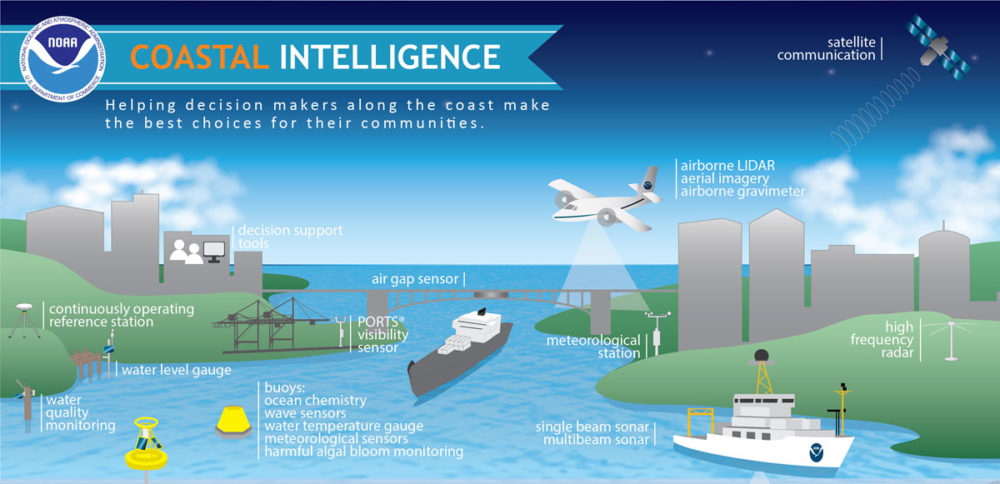This week the US Senate committee on Commerce, Science, and Transportation holds the nomination hearing of Wilbur Ross for Secretary of the Department of Commerce. If confirmed, Ross will take the helm of the department that has a critical mission to ‘create the conditions for economic growth and opportunity.’
There are two facts that may surprise you about the major bureau within the Department of Commerce—the National Oceanic and Atmospheric Administration (NOAA).
NOAA includes the oldest civilian science organization, established by Thomas Jefferson

Ferdinand R. Hassler proposed a science approach that was adopted for the survey of US coasts. He was charged with overseeing the design and manufacture of special scientific instruments to accomplish the goal of the 1807 Act signed by President Jefferson. Source: http://bit.ly/scoast. Image source: NOAA
On Feb 10, 1807, Thomas Jefferson signed the act that led to the formation of the oldest science “agency” at the time, the Survey of the Coast. The purpose of the act was to survey “the coasts of the United States” including “…any other bank or shoal and the soundings and currents beyond the distance aforesaid to the Gulf Stream, as in his opinion may be especially subservient to the commercial interests of the United States.” (Emphasis added.)
From the very beginning, successful navigation by ships to and from US ports was understood to be foundational to economic activities of the young democracy. The agency may have changed names over time, but it still exists as part of NOAA in the Department of Commerce.
NOAA services support more than one-third of US GDP
According to the NOAA Chief Scientist’s 2016 report, products and services of NOAA affect more than one-third of the Gross Domestic Product (GDP) of the United States. This initially may seem surprising, but it starts to make sense if you think about just a few of the services provided.
NOAA helps ships navigate successfully to and from port by providing accurate nautical charts for the safety of maritime commerce. In addition, NOAA shares timely and accurate information on factors influencing water levels (tides, storm surge, sea level rise, etc.). NOAA also developed the Air Gap system which updates every 6 minutes to inform ship’s captains about changing conditions to keep ships from running aground or into the bridge.
Anyone who eats seafood benefits from NOAA’s stewardship of sustainable fisheries and healthy ecosystems in ways that support jobs and helps keep our seafood safe. NOAA has improved forecasts for harmful algal blooms. Scientists at the agency and cooperative institutes conduct research and monitoring for changes in fisheries and marine ecosystems from ocean acidification and temperature changes.
Businesses, farmers, homeowners and nearly everyone living in the US at some point makes important decisions based on weather forecasts. No matter your source of weather, all forecasts are underpinned by observations and models provided by NOAA through its National Weather Service (NWS) and National Environmental Satellite, Data, and Information Service (NESDIS).

Recent Tropical storm and hurricane forecasts from the National Hurricane Center (NHC) have improved track forecasts over time by narrowing the evacuation region over longer lead times (NOAA).
Working with domestic and international partners, NOAA provides increasingly accurate hurricane tracks which gives people more time to get out of harm’s way. More accurate forecasts help save lives and lessen disruptions to economic activities.
Annual US GDP in 2015 was 18036.6 billion US dollars. Services that support one-third of GDP are worth it. NOAA’s budget is equivalent to only a nickel a day for every American (FY16 Budget).

Coastal intelligence for the 21st century. NOAA provides the latest science and observations for protecting lives and supporting a growing economy. Source: NOAA

